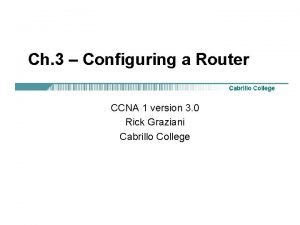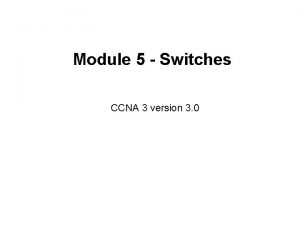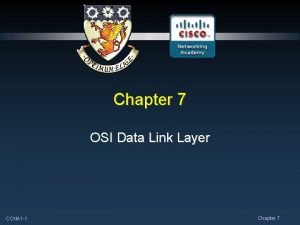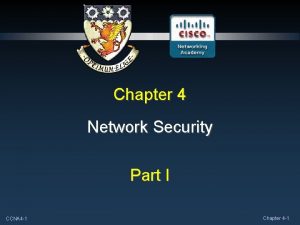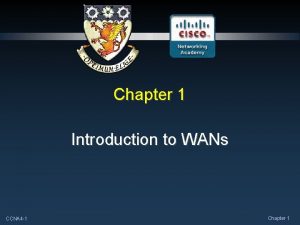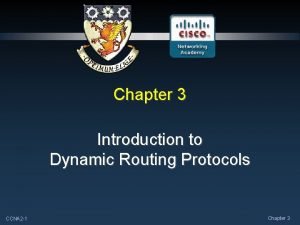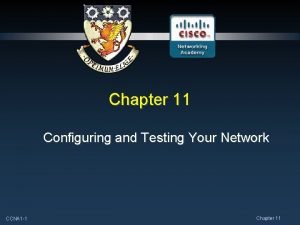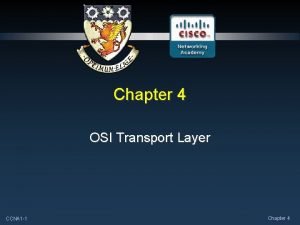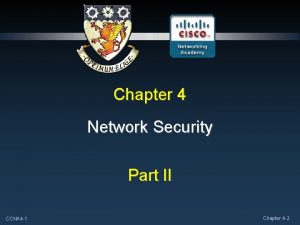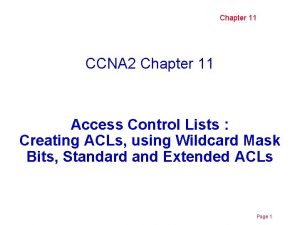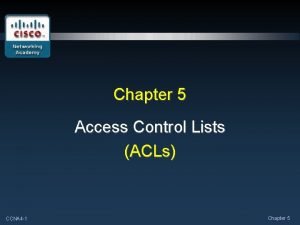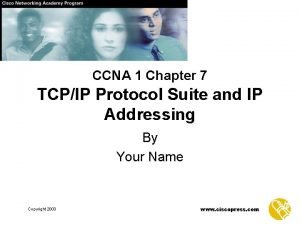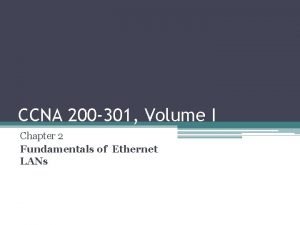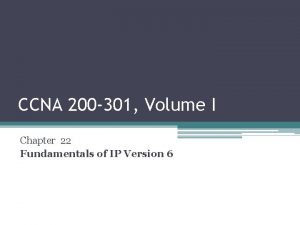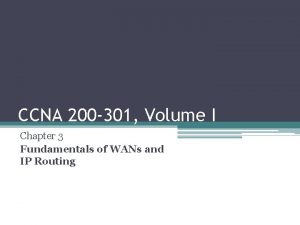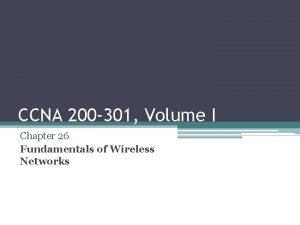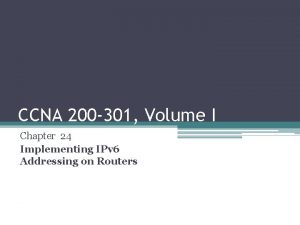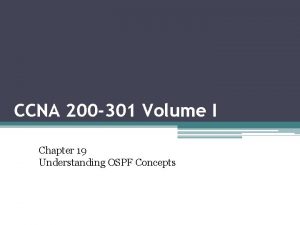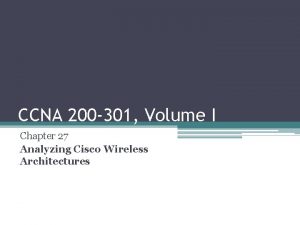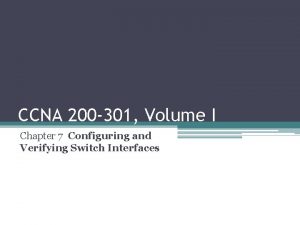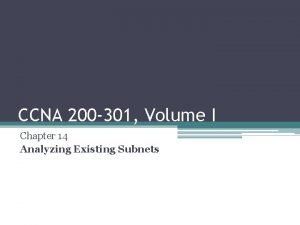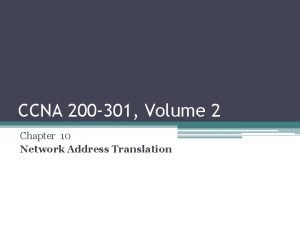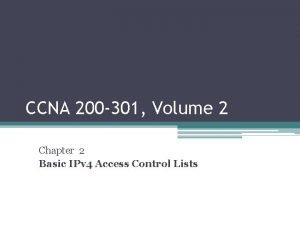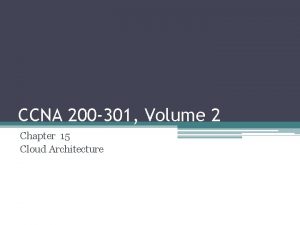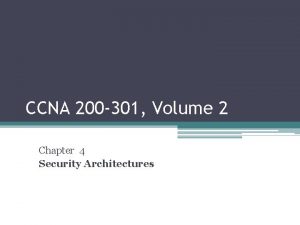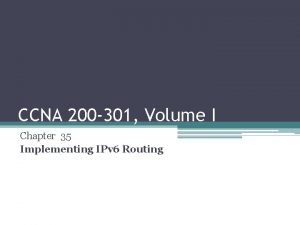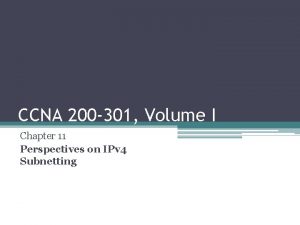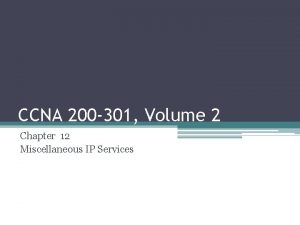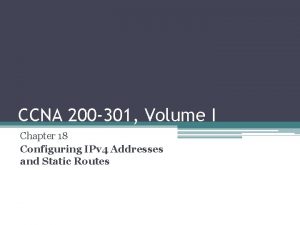CCNA 200 301 Volume I Chapter 26 Fundamentals























- Slides: 23

CCNA 200 -301, Volume I Chapter 26 Fundamentals of Wireless Networks

Objectives • • Comparing Wired and Wireless Networks Wireless LAN Topologies Other Wireless Topologies Wireless Bands and Channels

Unidirectional vs. Bidirectional Communication

Interference from Simultaneous Transmissions

802. 11 Basic Service Set

Traffic Flows Within a BSS

Distribution System Supporting a BSS

Supporting Multiple SSIDs on One AP

Scaling Wireless Coverage with an 802. 11 Extended Service Set

802. 11 Independent Basic Service Set

Extending the Range of an AP with a Wireless Repeater

Nonwireless Device Connecting Through a Workgroup Bridge You might encounter two types of workgroup bridges: • Universal workgroup bridge (u. WGB): A single wired device can be bridged to a wireless network. • Workgroup bridge (WGB): A Ciscoproprietary implementation that allows multiple wired devices to be bridged to a wireless network

Point-to-Point Outdoor Bridge If the LANs at two locations need to be bridged, a point-to-point bridged link can be used. One AP configured in bridge mode is needed on each end of the wireless link. Special purpose antennas are normally used with the bridges to focus their signals in one direction—toward the antenna of the AP at the far end of the link. This maximizes the link distance.

Point-to-Multipoint Outdoor Bridge A point-to-multipoint bridged link allows a central site to be bridged to several other sites. The central site bridge is connected to an omnidirectional antenna, such that its signal is transmitted equally in all directions so that it can reach the other sites simultaneously. The bridges at each of the other sites can be connected to a directional antenna aimed at the central site.

Typical Wireless Mesh Network

RF Overview Failed attempt to pass a message down a rope Sending a continuous wave down a rope

Traveling Electric and Magnetic Waves

Wave Propagation with an Idealistic Antenna

Cycles Within a Wave

Frequency Unit Names

Continuous Frequency Spectrum

Wireless Bands and Channels Channel Layout in the 2. 4 -GHz Band Channel Layout in the 5 -GHz Band

Basic Characteristics of Some IEEE 802. 11 Amendments
 Ccna 200-301 slides
Ccna 200-301 slides Ccna 200-301 ppt slides download
Ccna 200-301 ppt slides download 200 200 300
200 200 300 Intermediary devices
Intermediary devices Ccna 3 chapter 1
Ccna 3 chapter 1 What is a function of the data link layer ccna
What is a function of the data link layer ccna Ccna 4 chapter 4
Ccna 4 chapter 4 Modern network security threats
Modern network security threats Ccna 4 chapter 1
Ccna 4 chapter 1 Ccna 4 chapter 7
Ccna 4 chapter 7 Ccna 2 chapter 3
Ccna 2 chapter 3 Ccna chapter 11
Ccna chapter 11 Ccna 1 chapter 4
Ccna 1 chapter 4 Ccna 4 chapter 4
Ccna 4 chapter 4 Ccna chapter 11
Ccna chapter 11 Ccna 4 chapter 5
Ccna 4 chapter 5 Ccna 1 chapter 7
Ccna 1 chapter 7 200+200+100+100
200+200+100+100 800+200+400
800+200+400 200+200+300
200+200+300 100 200 300
100 200 300 200+200+300+300
200+200+300+300 100 + 100 + 200
100 + 100 + 200 Ccna drugs
Ccna drugs

